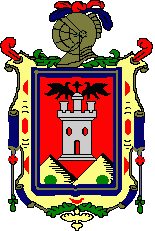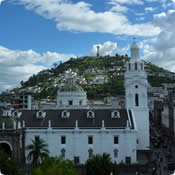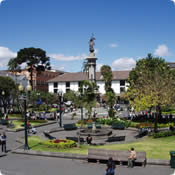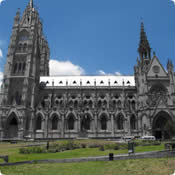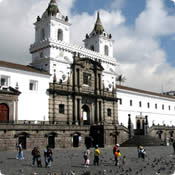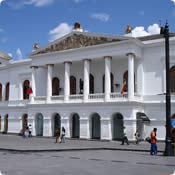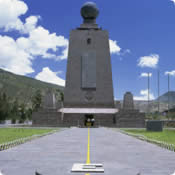Quito Ecuador
Besides its amazing landscapes, Quito is known for its treasures of colonial churches, paintings, sculptures and carvings. The Spanish Colonial Period extends from the XVI to the XVIII Century. Ecuadorian colonial art combines the European Renaissance and Baroque styles with the indigenous and mestizo influences. With the arrival of the Spaniards, the Roman Catholic Church became the center of the religious instruction and the largest patron of the arts. As part of the acculturation of the indigenous people, the Spanish established painting and sculpture schools where Spanish artists trained the indigenous population in the arts. As a result the Quitenian School, became famous in Latin America for its talented artists, including Bernardo de Legarda and the indigenous artists Caspicara and Pampite. Miguel de Santiago, Javier de Goribar , Manuel Samaniego and Padre Bedon were other outstanding representatives of this art school. Scholars consider their contributions to colonial art as some of the most valuable in America. Thus, the UNESCO declared Quito a “World Cultural Heritage Site” in 1978.
However, the history of Quito stretches far beyond the arrival of Spaniards. Before the Spanish Sebastian de Benalcázar conquered the city in 1534, the Incas conquered it in the XV century. At the time when the Incas came, they found an organized civilization: the Shyris Futhermore, recent discoveries have uncovered archeological sites that date back to 1500 BC. These archeological remains are aligned with the summer solstice and the winter equinox, demonstrating that the native people have an impressive knowledge of the course of the sun. These cultures are believed to have migrated from Ecuadorian Coast.
Quisat-to, the original name of the city, means “middle of the Earth” in the ancient “tsafiqui” language. Quito is the only site on the planet where the Equator crosses over highlands. On the rest of the Earth’s surfaces crosses through jungle or ocean. Therefore, the pre-Inca cultures could develop their astronomical knowledge aided by the clear landmarks surrounding the city: the Pichincha volcano (15.000 ft) to the west, the Antisana (18,700ft) to the east, and the peak of the snow-capped Cayambe (18,725 ft) to the northeast, almost precisely on the Equator. The city itself emerges over 9,184 it above sea level; it is the second highest capital in the world. Thus, Quito could be considered the best natural astronomical observatory.
Quito extends along the Eastern side of the Pichincha volcano. The city is long and thin, with a length of aprox. 22 miles and a width of 2-3 miles. The temperature in the city varies along the day, in the early morning and a night it can be at 10ºC, and at noon it can reach up to 25ºC. The geographical conditions of the zone give place to a number of ecosystems, thus. Quito’s surroundings offer a diversity of landscapes, each with unique flora and fauna.
La Mariscal
La Mariscal can be considered the entertainment district of Quito, where you find a variety of restaurants, bars, cafes, internet cafes, Spanish schools and a large range of hosting options. Plaza El Quinde (Reina Victoria and Foch) is one of the most popular meeting points for both Ecuadorians and tourists. Every Wednesday night at 20h30 live music presentations take place at this charming Plaza.
The Mercado Artesanal (handicraft market) offers a variety of handicrafts from all over the country for excellent prices, displayed in more than 100 colorful stands. If you are not able to visit the Otavalo indigenous market at the Imbabura province, this market in Quito is a must. It is located at Jorge Washingto St. between Reina Victoria and Juan Leon Mera.
